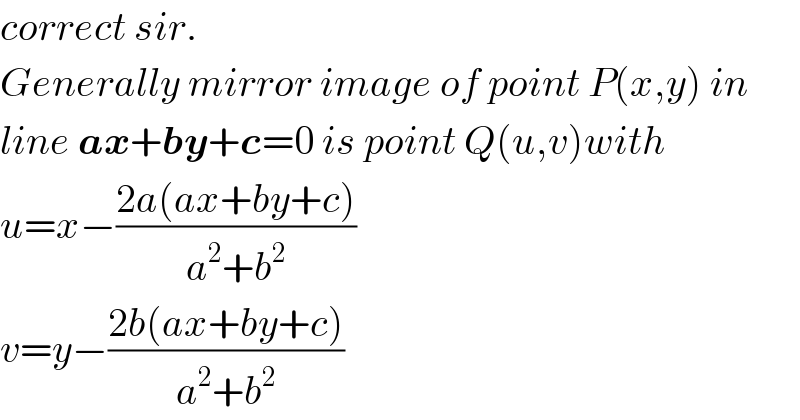
Question and Answers Forum
Question Number 43331 by ajfour last updated on 09/Sep/18

Commented by ajfour last updated on 09/Sep/18

Commented by ajfour last updated on 09/Sep/18

Commented by ajfour last updated on 09/Sep/18
![p=((c+mh−k)/(√(1+m^2 ))) y−k = 2pcos θ h−x = 2psin θ tan 𝛉 = m ⇒ x=h−((2m(c+mh−k))/(1+m^2 )) and y= k+((2(c+mh−k))/(1+m^2 )) Lets consider a point P(h,k) of red parabola. ⇒ f(h,k)=0 let image of P (h,k) be I(x,y) But y=x^2 , ⇒ k+((2(c+mh−k))/(1+m^2 )) =[ h−((2m(c+mh−k))/(1+m^2 ))]^2 hence f(x,y) is y+((2(c+mx−y))/(1+m^2 ))=[x−((2m(c+mx−y))/(1+m^2 ))]^2 . Just to check let m=1 , c=0 ⇒ x=y^2 (reflection of y=x^2 ) .](Q43336.png)
Commented by ajfour last updated on 10/Sep/18

Commented by MrW3 last updated on 09/Sep/18

